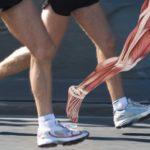Originally Published: on May 6, 2021 | WSJ Magazine | By Fiorella Valdesolo
“I’ve been a chiropractor since 1982, and I’ve never seen more low back crisis patients in my office than now,” says Isis Medina, who practices in New York. Over the past year, the cumulative effect of work-from-home scenarios—makeshift workstations at kitchen tables, on couches or beds, without proper chairs or desks; bare or slipper-shod feet, without the support of shoes—has been noticeably detrimental.
Prolonged sitting is the main cause of this misalignment. “In an ideal world, our life would be dynamic,” says Emily Kiberd, a doctor of chiropractic in New York City and Boulder, Colorado. “We would sit, we would stand, we would take a walk, we would, especially in New York, run for the train…we would have variety in our movements.” For at-home workers stuck in cramped spaces with no commute and little free time, range of motion is much more limited than it once was. “The recommendation is 10,000 steps a day, and my guess is that no one is meeting that now,” says Kiberd.
Ruth Anselm, founder of RMA Therapeutic Massage in Rochester, New York, says that the most common pain points from prolonged sitting are the neck and shoulders, lower back and head. As muscles tighten from lengthy sedentary periods, they pull a person into a hunched position, Anselm says. To be healthy, the tissues that make up the musculoskeletal, visceral, and neurovascular systems need the elasticity that movement provides, says Michele McGurk, a physical therapist at Danu in Brooklyn. “If we’re mostly static during the day then our body’s overall function will become less effective as well,” she says. A 2018 study published in the American Journal of Epidemiology found that people who sit for more than six hours a day are at an increased risk for cancer, heart disease and stroke.
Brain fog may also be connected to all that sitting in front of the computer, says Jill Blakeway, a doctor of acupuncture and founder of New York’s Yinova Center, whose patients have been complaining about Zoom-born exhaustion. “What they don’t realize is that this is often related to inactivity,” she explains. “Muscles play a role in balancing blood sugar because they draw glucose from the blood when they’re active.” When we sit for a long time, those muscles relax and our metabolism becomes sluggish.
Pandemic stress overload has caused postural problems as well. “Stress makes our weakest area weaker,” says Medina. Kiberd adds that an increase in stress can lead to more slouching and shallow breathing, which can result in headaches and neck and back pain.
Long-term sitting and hunching has an effect on other parts of the body. For example, says London-based skin specialist Alexandra Soveral, “raised shoulders, forward necks, tensed muscles, all have the potential of blocking the [lymphatic system’s] drainage passages from the face.” The result can be acne or puffy, dull skin. McGurk, who specializes in pelvic health, has seen a noticeable uptick in people with bladder issues and pelvic pain, issues she attributes to anxiety, dehydration, increased caffeine and alcohol consumption and a more sedentary lifestyle.
One first step toward improving alignment may be learning how to sit properly. According to Anselm, an ideal seat should be at a height where knees and hips are at a 90 degree angle with feet planted on the floor. (If you’re short, adding a yoga block can help.) Shoulders should be balanced over the hips; arms should not have to reach too far for keyboards and elbows should stay relaxed; and monitors should be adjusted so the center of the screen is at eye level. For low back support, Blakeway suggests tucking a rolled-up towel behind you. And consider your sitting stance: In this case, Medina says, the much-maligned man-spread is actually your safest bet. “That open-legged posture forces you to lift at the core, and the neck will automatically follow suit,” she explains. Regularly alternating positions between sitting and standing is also a good idea. “The advice I give my patients is to change your position often so your muscles don’t shorten and joints don’t seize up,” says Blakeway.
Intentionally incorporating movement throughout the day is key as well. Kiberd, who calls it movement microdosing, has her patients set a timer every hour for a five-minute break, which can be used for a quick walk or stretch session. “The key areas that need attention are the hip flexors, piriformis, hamstring, and quadricep muscles,” says McGurk. She likes to do lower back exercises, like pelvic tilting, spinal rotation and backward bending, or deep squats with diaphragmatic breathing to help stretch the pelvic floor. Medina suggests holding a two-minute plank to help refocus the core. Anselm says yogic cat-cow stretches can be restorative, while leg swings and arm circles, focusing on back stroke motion, can get the blood moving. She also recommends lying on your back with your legs up at a 90 degree angle on a chair to help the held muscles release and relax. “When our joints become stiff from underuse and we feel achy it makes it less likely that we’ll exercise,” says Blakeway, “but moving and stretching are the solution.”







